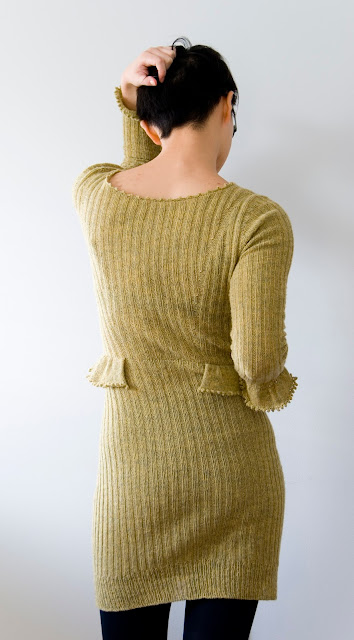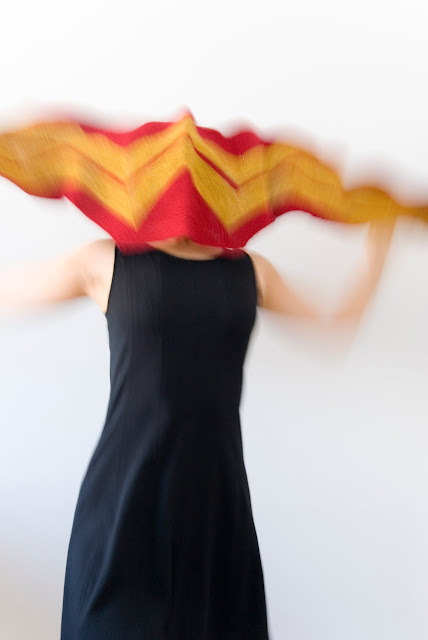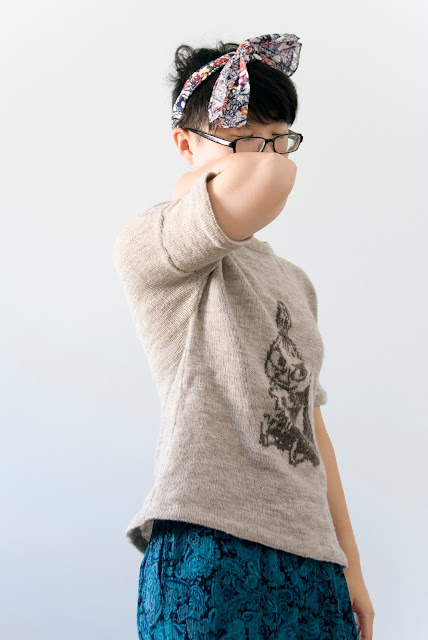- Norse Myths: Tales of Odin, Thor and Loki by Kevin Crossley-Holland, illustrated by Jeffrey Alan Love
- There's nothing quite like a deadline to make you finish reading something!
- Wow are these illustrations ever beautiful. And they work so well with the text, as both interact with one another across the space of the page to give you a fuller experience of reading the myths (in all their perplexing detail and rather ambiguous moral takeaways) than a more traditional take in the form of text separate from the images. I would heartily recommend this version of the Norse myths to readers of all ages; it's an absolute delight to make your way through, and I can see each of these chapters working very well as a bedtime story.
- I added this note to the November list as well, but the structure of the collection of Norse myths here made me think of Márquez's One Hundred Years of Solitude, and I wonder whether that was what Márquez was going for, the mythical quality of the shape of that family's tale.
- The Girl King (2015)
- Now I'm interested in reading up on the story of Kristina of Sweden! That being said, the film doesn't really do too great a job portraying how her reign affected Sweden and its people: did her dreams actually become reforms to educate the population? How did her abdication of the throne affect her reforms, and did her successor continue through with them and in trying to maintain peace? Did she actually convert to Roman Catholicism, or was it just a rumour? The film makes it sound as though that is what she did end up doing, but we're not sure whether that's the reason she abdicates. Also, the film makes her look like a horribly irresponsible ruler who basically dedicated a decade on the throne to fulfilling her own desires without too much regard for the populace, despite her initial speech to educate the masses. I suppose the focus was more on her personal life than on her reign, but still. It would've been nice to know how competent a ruler she was in reality.
- Wild Things: The Joy of Reading Children's Literature as an Adult by Bruce Handy
- This is a pretty straightforward celebration of children's literature as something to be read by all ages, but also a fun look at children's authors and how some of their lives certainly didn't seem to provide any clues that they might be particularly good at writing children's lit; in fact, many of them remained childless, from the brief survey of many popular authors featured in Wild Things, and further, many of them didn't really enjoy the company of children. They liked what children liked, and so in writing what they liked, were able to write things children enjoyed.
- Several passages made me laugh out loud, and it's the tongue in cheek manner that Handy writes in that makes this a delight to read. Most of this really just confirms what I already think about children's literature, but I haven't read a lot of the novels and picture books referenced throughout. I'd like to re-read this one in a number of weeks, since I did have to rush through it a bit because there were holds on it.
- The Virgin Suicides (1999) as part of the Sofia Coppola: A Name of Her Own series at the TIFF
- The Haunting (1963) as a part of the AGO's Nightmare on Dundas Street Movie Nights
- I don't suppose this was meant to be funny?
- There's this sense that Nel is always being acted upon, and never really an agent in her own life. And the one time she does try to be an agent, she's deluding herself entirely, because she's being controlled by the ghost or whatever it is that haunts Hill House (I'm of the understanding it's actually the house itself). Is this actually a cautionary tale directed at women to overthrow the patriarchy, or at least make sure you are an active agent in your own life, lest you end up like Nel? Though arguably, Nel is happy because she gets to stay with the house always, which is exactly what she wanted at the end, though perhaps not quite the way she anticipated.
- Goodbye to All That (2014)
- Eh. Not great. I mean, I'm kind of glad he chose to stay for his daughter and complete the stone wall - finally complete a project - but at the same time, that non-ending could've been much better, I think.
- Frankly, I'm more interested in the trailers that came before the movie.
- Why Grow Up? Subversive Thoughts for an Infantile Age by Susan Neiman
- Reading this more or less in conjunction with Wild Things actually makes for quite a nice pairing.
- While most of this is not so much a rehash of what I already know insofar as that I haven't learned about Kant, Rousseau, and Hume's philosophies on childhood and how to become a mature adult, but I couldn't help but feel as though I must be doing some sort of confirmation bias in my selection of what to read, even in this section bordering between self-help and philosophy.
- Vikings exhibit at the ROM
- I didn't get to spend as much time here as I would've liked, but it was surprising how far the Vikings got and either conquered or traded with, as well as how intricate their decorative metal parts were, whether they be brooches or the hilt of swords.
- The hanging nails that form an implied ship was pretty well done as well. I always thought that the burning ship burial was the norm, so I felt a bit foolish when reading about how the whole shebang was probably a bit of a waste of precious materials, because that should have been pretty obvious if I had given even just a bit of thought to it.
- Also, I don't think I knew that the 3 sisters who spin, weave, and cut your thread of life came from Nordic myths (they're the Nörns). I get the feeling I did know, but I think you hear about the Fates in Greek mythology as well, don't you? The moirai. I wonder who influenced who, or if this is just a happy coincidence? What other cultures have them, if any, and was it because they traveled, or is there something about 3 sisters spinning, weaving, and cutting your fate that come from the universal unconscious?
- I loved seeing the spindles, needles, and weaving tablets, as well as the textile fragments! I'd be very interested in seeing how they used the weaving tablets - if there was a workshop, I'd have signed up.
- Nocturna (2007)
- Cute movie about facing your fears. The little boy seemed really pathetic throughout to me, though I understand why he had to be that way and that his character is probably very relatable for young children not yet fully ready to let go of their parents or their nightlights when headed to bed. Some of this really reminded me of The Cat Returns: the hoard of cats, the other world happening in the nighttime (when the king of the cats visits Haru v.s. Nocturna), the huge creature that guides the boy through the night (like Muu? Or whatever the fat cat's name is). Overall, really well done!
- Comet (2014)
- Pretty cool concept, and I'm left not sure whether these events really do take place over parallel universes or if they simply happen in the same one, as experienced by different Dells & Kimberlys in that they are different people at different points in their lives. I'm kind of put off by the ending though, and really wish Dell could have come to accept that Kimberly has moved on with Jack, and simply be able to appreciate that she is glad their relationship happened, that their past has changed her perception of the world for the better (in her opinion).
- Against Love: A Polemic by Laura Kipnis
- By the author of Unwanted Advances, this is a hilarious read about love and its place in society. It reads much like a tirade, in that I can imagine the tone of voice and incredulous gesturing about - as though to say, "Do we really subscribe to this? Are we really so daft?!" - throughout much of this polemic. Kipnis does bring this around towards the end to more serious matters though, and you get the feeling that what she really wants to bring to the fore are conversations around why extramarital affairs take place, questioning primarily the institution of marriage itself, from the religious & political levels. (The personal is political, after all.) I almost want to hear this as a TED talk or something. Though there are plenty of TED talks centered around love & marriage & dealing with "issues" in marriages.
- Looking forward to reading her other books.
- Ears to Speak Of (Amalia Pica), Urban Now: City Life in the Congo (Sammy Baloji & Filip de Boeck), and Demonstration (Michael Landy) at the Power Plant
- Concrete Utopia and basically all of Urban Now was pretty powerful and makes you consider that huge gap between what is being advertised as the modern urban hub - those colourful ads and the dream of the useful tower that uses solar power - and the reality of the situation. There's also a whole conversation to be had about taking the land from its original owners and inhabitants and selling it off. The video upstairs where chiefs recount their histories and the stories of the land, and describe how the arrival of the Belgians ruined their way of living, really sticks with you. In part because it's like the family histories you might hear from your parents or grandparents, but this history will no longer proceed the way it has gone, and there's a realization things can no longer be as they once were.
- The Night Gardener by Terry Fan
- (Not-so) little acts of beauty, no matter how fleeting, will forever change someone's life, all the more if you are following your passion.
- The Uncorker of Ocean Bottles by Michelle Cuevas
- Cute and uplifting, though the moral of the story being that hard work will not go unrewarded strikes me as patently false. I was also not all that uplifted by the end, but... it's a picture book. Perhaps my standards or expectations are a touch high?
- The Female Thing: Dirt, Sex, Envy, Vulnerability by Laura Kipnis
- Much less acerbic than Against Love, though I suppose that's a matter of difference between the polemic structure of Against Love and the more essay style Kipnis employs here in The Female Thing.
- I can see the beginnings of her essay Unwanted Advances in the last chapter here on vulnerability. And while I agree with Kipnis on the topic of how toxic the enterprise of rendering women victims is, she does develop it way more in Unwanted Advances than here.
- Labor of Love: The Invention of Dating by Moira Weigel
- In much the same way in which every generation laments how it's all going downhill and how things were better back in the day, it seems like we also tend to lament the death of dating before its actual demise - dating simply changes its form (and perhaps the slang used to refer to the process).
- It was pretty interesting to see how what we have come to think of as dating has changed throughout the ages, from calling to dating, to the Steady Era, to Rating and Dating, to what we now consider dating (I might be missing one or two transitions, or have put them in the wrong chronological order). And to think of dating as something much more fluid than it might seem at first glance (at the romance self-help section in bookstores & libraries everywhere) does make it a lot easier to negotiate where you stand in relation to the social structures surrounding the process, as opposed to having to either subscribe to a rigid system or refuse to do so altogether.
- Willy and the Cloud by Anthony Browne
- What Do You Do With a Problem? by Kobi Yamada, illustrated by Mae Besom
- Covering the same theme of what to do with a problem (also see Sam's Pet Temper, another gorgeously illustrated JP), though I personally enjoy this one over Willy and the Cloud for several reasons:
- Personal preference for the style of illustrations
- The use of fantasy to bring in the magical process whereby the little boy changes his entire world, rather than the use of an animal stand-in
- Pacing
- Grandpa Green by Lane Smith
- I'm surprised it took me this long to actually get to reading this JP, considering how many times I've seen it around. It was a sweet ending, but I was pretty confused for quite a bit of the book before realizing that the little boy running through the garden was the grandson.
- The Waiting Dog by Carolyn Beck
- Whoa. I heard it was gory and extremely detailed, but this was plain creepy! I did enjoy the singsong beat of the text, how the dog seems most playful until it doesn't, and the entire story goes downhill real quick. And in such detail, too! I imagine the author had no end of fun writing this with the target audience of "ages 8 and up" in mind, thinking of ways in which to scandalize the parents of that audience. You do learn quite a number of body parts as you turn the pages, and you also learn that we have 206 bones in our bodies! So I suppose it's educational as far as picture books go regarding concrete facts.
- While I wouldn't read this for a storytime (not that I do any storytimes, so I guess that point is rather moot), I'd love to see what kind of discussion bringing up this book in a children's literature class might generate!
- As for the story itself, I'd have to say it's not really all that interesting. I think it's much more about the concept and having it published as a children's book than anything: its merit lies in its shock factor and the horror it strikes in its readers.
- Rose's Garden, I'm Here, and So Few of Me by Peter H. Reynolds
- Reynolds has sort of been hit and miss with me: I really enjoyed Rose's Garden, which was incredibly sweet, but I'm Here was a bit of a flop for me, and So Few of Me didn't really stick with me too much, though it wasn't bad either.
- Eccentricities of a Blonde-Haired Girl/Singularidades de uma Rapariga Loura (2010)
- Back at it with the Portuguese films!
- I knew where this was going more or less from the beginning, when the main character tells his uncle over dinner that there were 150 handkerchiefs unaccounted for that must have been stolen, and I'm not sure the ending was all that satisfying to me. But it seems to be characteristic of Portuguese films?
- Call Me By Your Name (2017)
- I had such high expectations of this one! And it's not like it didn't totally deliver, because it was indeed a sweet, feel-good unconventional romance movie, but for me, it moved a little too slowly and sometimes the scenes would feel a little abrupt. I wonder if it would be better to have read the novel first?
- The message towards the end from the father to Elio was almost a bit rambling, but felt more real for it. The parents' attitude toward Elio & Oliver's relationship, whether they knew for sure or thought simply that they were great friends - kindred spirits, perhaps - was also wonderful in how much freedom they allowed the both of them to explore what their relationship meant to the both of them.
- The State of Affairs: Rethinking Infidelity by Esther Perel
- I'm a little disappointed, because I was expecting a more comprehensive and thorough take on the subject, but I like that Perel makes an argument for the active negotiation of what terms your relationships take on, instead of simply accepting whatever you think (and what you think your partner(s) think) constitute the labels that you put onto the relationship (e.g. monogamy - what a loaded term! But also, where are its boundaries exactly?).
- Neighboring Sounds/O Som ao Redor (2012)
- Portuguese films sure do love their open endings. Well, not quite so open, but there's so much more ambiguity to the ones I've watched - perhaps it's just that the library's collection is skewed towards these "cinema"-type Portuguese films? - as compared to North American movies. I feel like they're more similar in type to French films (though Call Me By Your Name was also redolent of the sort of feeling or shape of the Portuguese films I've watched). I'm also wondering whether most of the films I've watched thus far come from Portugal or Brazil, and whether there's a difference in the sort of movies they each release.
- From the synopsis, I was expecting something more along dystopian lines, but this was very far from that, and I'm not too sure what to make of it. I enjoyed the movie overall, and am starting to take pleasure in seeing the everyday reflected within films as well, such that not everything necessarily drives the plot toward its end, rather filling in the blanks and fleshing characters out.
- I'm also very interested in how social class features in this film, because I'm unfamiliar with both Portuguese and Brazilian culture.
- The Best Things in Life: A Guide to What Really Matters by Thomas Hurka
- Well, I definitely took the wrong approach to reading this, because what I really desperately wanted at the time was something that could tell me how to live a good life in no uncertain terms, which paradoxically upon reflection I would most likely reject outright because who's the author to tell me how to live a good life? And of course, even just in conversation with the person who told me to read this I knew the topic had to be a lot less black and white than that. (I told him, "help me out with some RA for me: something on morality & ethics - I want what I read to destroy me". This destroyed me in a different way, since it was so far from what I was looking for, but really it's nothing I never knew.)
- tldr: There are many different ways to live a good life, and it really just depends on your individual circumstances. To cushion the negative consequences of dying, all you've got to do is live the best life you can before you die.
- How to Become a Scandal: Adventures in Bad Behaviour by Laura Kipnis
- I really only started reading this because Kipnis is the author, but to tell the truth, my enjoyment of her books has dwindled as I went along her publications in chronological order: I enjoyed the first three quarters of Against Love greatly, identified with The Female Thing, but experienced the same tapering enjoyment as I read along, and now with this one, I don't have much to say about it. Either my expectations are way higher than they should be, or Kipnis has a tendency to weak conclusions (you can feel them coming at you a mile away).
- Going by Kipnis' description, I think I'd be more interested in reading the other book on scandals that Kipnis cites in her bibliography: On Scandal: Moral Disturbances in Society, Politics, and Art by Ari Adut.
- Dork Diaries: Tales from a Not-So-Graceful Ice Princess by Rachel Renée Russell
- I realize this is all supposed to be written in the voice of a 14 year old, but I'm quite close to certain neither I nor my friends were quite this vapid at the age of 14. That's what, grade 9? Also, way to reinforce gender norms! The villain, Mackenzie, is just as empty a character as Nikki, and Brandon the love interest is similarly flat. Maybe it's because it's all described through the eyes of Nikki, who's just really fixated on Brandon and her animosity towards Mackenzie. I don't know if I can recommend this in good faith to anyone, to be honest, and if the rest of the series is like this, I'm actually rather worried that this is the sort of drivel children like to read. I'm interested to see how Diary of a Wimpy Kid compares. (I'm working under the assumption that Dork Diaries is a response to Diary of a Wimpy Kid, except trying to target little girls as the audience.)
Working on:
- We Real Cool: Black Men and Masculinity by bell hooks
- Heidegger's Aesthetics, written by Iain Thomson
- A coworker recommended I start reading around Heidegger before trying to read actual Heidegger and gave me a couple of people to search up, Iain Thomson one of them. And now that someone else thinks they want to read Being and Time (making it so I have to actually return the book on time), I think I'll take his advice and read around Heidegger before turning to Heidegger proper.
- The Haunting of Hill House by Shirley Jackson
Articles
- I find this quote from Deathblow Dealt to Dark Matter Disks from Quanta absolutely hilarious: "The possibilities for dark matter are virtually endless, given the stunning absence of experimental hints about its nature" (Wolchover, Quanta magazine). I'm not sure if this is being delivered in the absolute driest tone of voice achievable or if the author of this article is 100% sincere when they type this. (In other words: dark matter has close to endless possibilities regarding what it is and what it can do, because we haven't found anything to actually prove beyond a doubt it exists; it's kind of that nice, convenient catchall.)
- Not strictly about why the holiday season is so oppressively cheerful, but I feel that so much that I need to remember it's not just me, even if this article is actually more a list of books to help take away some of that forced joyfulness.










